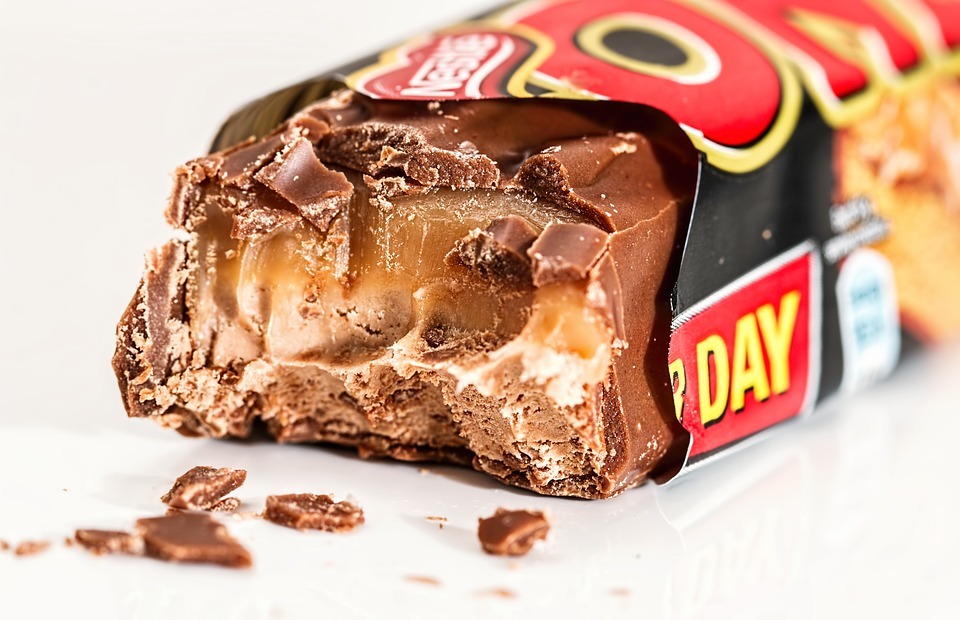This article delves into the dangers of chocolate for dogs, offering a comprehensive guide to help pet owners understand why chocolate is harmful, how to identify the risks, and what steps to take if your dog consumes chocolate. We'll examine the toxic ingredient, the severity of poisoning, how to recognise the symptoms, and the necessary actions to take in case of ingestion.
Part 1: The Truth About Chocolate and Dogs

1.1. Why is Chocolate Toxic to Dogs?
Chocolate contains a compound called theobromine, a stimulant that acts as a methylxanthine. Unlike humans, dogs lack the necessary enzymes to break down theobromine efficiently. This means the compound accumulates in their system, leading to a toxic build-up that can cause various health complications.
1.2. Theobromine Concentration: A Key Factor
The amount of theobromine in chocolate varies greatly depending on the type. Dark chocolate, often touted for its health benefits, contains the highest concentration of theobromine, making it the most dangerous for dogs. Milk chocolate contains less theobromine, but still poses a significant risk, especially in large quantities.
1.3. How Theobromine Affects Dogs
Theobromine acts as a stimulant in dogs, affecting their nervous system, heart, and kidneys. As the compound builds up, it can lead to various symptoms, ranging from mild digestive upset to life-threatening complications.
Part 2: Understanding the Severity of Chocolate Poisoning

2.1. Factors Influencing Toxicity
The severity of chocolate poisoning in dogs depends on several factors:
- Type of chocolate: Dark chocolate is the most dangerous, followed by milk chocolate, then white chocolate (which contains minimal theobromine).
- Amount consumed: Larger quantities of chocolate pose a greater risk, as the theobromine concentration increases.
- Dog's size: Smaller dogs are more susceptible to chocolate poisoning than larger dogs, as the toxic dose is relative to their body weight.
- Dog's breed: Some breeds may be more sensitive to theobromine than others. For example, toy breeds often exhibit more severe reactions.
2.2. Determining the Toxic Dose
A rough guide to the toxic dose of chocolate for dogs is:
- Dark Chocolate: 0.5 oz per 10 pounds of body weight
- Milk Chocolate: 1 oz per 10 pounds of body weight
However, it's crucial to note that these are merely estimations. Even small amounts can be dangerous, and individual dogs can react differently.
Part 3: Recognizing the Symptoms of Chocolate Poisoning

3.1. Early Signs of Chocolate Toxicity
Early symptoms of chocolate poisoning can appear within 6-12 hours of ingestion. These initial signs may include:
- Increased thirst
- Increased urination
- Restlessness and hyperactivity
- Vomiting
- Diarrhoea
- Panting
3.2. More Serious Symptoms: A Sign of Urgent Action
If left untreated, chocolate poisoning can progress to more serious symptoms, often appearing within 12-24 hours of ingestion:
- Tremors and muscle twitching
- Seizures
- Increased heart rate
- Rapid breathing
- Weakness and lethargy
- Coma
- Death
3.3. When to Seek Veterinary Care
If you suspect your dog has eaten chocolate, even a small amount, it's essential to contact your veterinarian immediately. Don't wait for symptoms to appear, as early intervention significantly improves the chances of recovery.
Part 4: What to Do If Your Dog Eats Chocolate
4.1. Act Quickly: Time is of the Essence
If you suspect your dog has consumed chocolate, act quickly. The faster you intervene, the better the outcome.
4.2. Contact Your Veterinarian
The first step is to call your veterinarian immediately. They will be able to assess the situation and provide specific guidance based on your dog's individual circumstances, the amount and type of chocolate consumed, and the time of ingestion.
4.3. Gather Information for the Veterinarian
When calling the vet, have the following information readily available:
- The type of chocolate consumed (dark, milk, white, baking chocolate, etc.)
- The estimated amount of chocolate consumed (e.g., one small piece, half a bar)
- The time of ingestion
- Your dog's weight and breed
- Any symptoms your dog is exhibiting
4.4. Possible Treatments: Veterinary Guidance is Essential
Your veterinarian may recommend various treatments depending on the severity of the poisoning and your dog's condition:
- Inducing vomiting: This may be recommended if the chocolate was ingested recently. However, your vet will only induce vomiting if it is safe for your dog, as it can be dangerous in certain situations.
- Activated charcoal: This can help to absorb the toxins in the dog's stomach, reducing the amount of theobromine absorbed into the bloodstream.
- Intravenous fluids: This can help to flush the toxins out of the dog's system and support kidney function.
- Supportive care: Your dog may need to be hospitalised for observation and supportive care, such as oxygen therapy, medications to manage seizures, and monitoring for other complications.
Part 5: Prevention is Key: Keeping Chocolate Out of Reach
5.1. Safeguarding Your Home
The best way to prevent chocolate poisoning is to keep all chocolate out of your dog's reach. This includes:
- Storing chocolate in airtight containers in high cupboards or cabinets, inaccessible to your dog.
- Keeping chocolate out of sight and reach of curious dogs, even if you believe they won't be tempted.
- Supervising your dog closely when you are eating chocolate or handling it in any way, ensuring they don't snatch any.
5.2. Educating Family Members
It's essential to educate all family members, including children, about the dangers of chocolate for dogs. Make sure everyone understands the importance of keeping chocolate out of their reach and handling it responsibly around pets.
Part 6: FAQs
6.1. How Much Chocolate is Too Much for My Dog?
There is no safe amount of chocolate for dogs. Even small amounts can cause problems, especially for smaller breeds. It's best to err on the side of caution and avoid giving your dog any chocolate at all.
6.2. Will My Dog Be Okay if It Only Eats a Small Piece?
Even a small piece of chocolate can be dangerous for some dogs, depending on their size and the type of chocolate. It's always best to contact your veterinarian if you suspect your dog has eaten chocolate, no matter how small the amount.
6.3. What Happens if My Dog Eats Baking Chocolate?
Baking chocolate is the most dangerous type of chocolate for dogs, as it contains the highest concentration of theobromine. If your dog eats baking chocolate, it's crucial to contact your veterinarian immediately.
6.4. What Should I Do if My Dog Shows Signs of Chocolate Poisoning?
If your dog shows any signs of chocolate poisoning, contact your veterinarian immediately. Don't wait for symptoms to worsen.
6.5. How Long Does Chocolate Poisoning Last?
The duration of chocolate poisoning can vary depending on the amount of chocolate consumed and the dog's size. If your dog has ingested a large amount of chocolate, they may require veterinary care for several days, and the effects of theobromine can linger for longer.
6.6. Can I Give My Dog Chocolate Alternatives?
While it's tempting to offer your dog a chocolate alternative, many commercial dog treats contain artificial sweeteners, such as xylitol, which can be toxic to dogs. It's always best to consult your veterinarian before giving your dog any treats, even those labelled "dog-friendly."
6.7. Can Dogs Eat White Chocolate?
White chocolate technically contains very minimal amounts of theobromine, making it safer than dark or milk chocolate. However, it can still cause digestive upset in dogs, so it's best to avoid it altogether.
By following these guidelines, you can help to keep your furry friend safe and healthy. Remember, chocolate is a delicious treat for humans, but it can be deadly for dogs. It's crucial to be vigilant and keep all chocolate out of their reach to prevent potential health risks.
Everyone is watching
-

Can Dogs Eat Bananas? A Guide to Safe Treats
DOGS & PUPPIESThis comprehensive guide will delve into the world of canine nutrition, focusing on the popular question: can ...
-

Can Dogs Eat Oranges? (Is It Safe or Toxic?)
DOGS & PUPPIESThis article delves into the question of whether dogs can safely consume oranges. We'll explore the nutrition...
-

Can Dogs Eat Grapes? The Shocking Truth About This Fruit
DOGS & PUPPIESThis article delves into the controversial topic of grapes and dogs, exploring the potential dangers associate...
-

Why Do Dogs Eat Poop? Understanding Coprophagia in Dogs
DOGS & PUPPIESThis article delves into the perplexing phenomenon of coprophagia, the act of eating faeces, in dogs. We explo...
-

Can Dogs Eat Shrimp? A Guide to Safety and Risks
DOGS & PUPPIESThis comprehensive guide dives into the world of shrimp and dogs, exploring the potential benefits and risks a...
